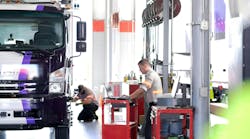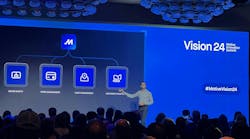“Alternative power is a topic which will change the world,” said Martin Daum, president and CEO of Daimler Trucks North America (DTNA), “and at DTNA, clean energy is and will be very important for years to come.”
Daum was the keynote speaker at the Alternative Clean Transportation Expo in Long Beach, CA, produced by Gladstein, Neandross & Associates. “How exactly to get to that clean energy future is not yet clear,” Daum told the audience, “but we have spent $2.2 billion so far in getting our company in that direction…and we are proud to be a part of the team of [clean power] experts worldwide.”
Daum went on to talk about DTNA's long history of work to achieve fuel efficiency, but noted that “the customer is the one who decides if we are serious or not about fuel efficiency.” Over 2,500 alternative drivetrains have been sold by DTNA thus far, and by April, the company was already ahead of last year's record, he said.
“We are really glad to have a broad array of natural gas options available, including Thomas Built hybrid and CNG buses,” he noted. “That is very important to me. Buses work about 28 years, and they drive through the neighborhoods with exhaust at the levels of our kids….”
Later, Daum told Fleet Owner that there are three types of innovation: innovations that improve efficiency and make trucks lower cost, which have already been done; innovations that can deliver a 2 to 4% improvement in fuel efficiency and offer a payback within two to four years; and “non-feasible innovations,” technologies that need diesel to be at $10/gal. or more to justify the investment.
The non-feasible projects might be demanded by regulation or forced by Congressional action, he noted, but added that was the problem with using regulations to push specific technologies forward. “You might inadvertently misguide the innovation process and force development down the wrong path,” he said, adding that was why incentives for innovation were a preferred approach to regulation.


